If you read technology reviews and editorials it shouldn’t be a surprise to hear that NVMe is superior to legacy interfaces like SATA and IDE. NVMe rides the PCI Express (PCIe) bus and over the last few years the governing body, PCI-SIG, has increased bus speeds at a rapid rate. The bus speed, known as bandwidth, increases with each new generation and has accelerated the proliferation of devices attached to platforms. With more devices in play, CPU, chipset, and motherboard manufacturers have met the demand by increasing the number of PCIe lanes available.
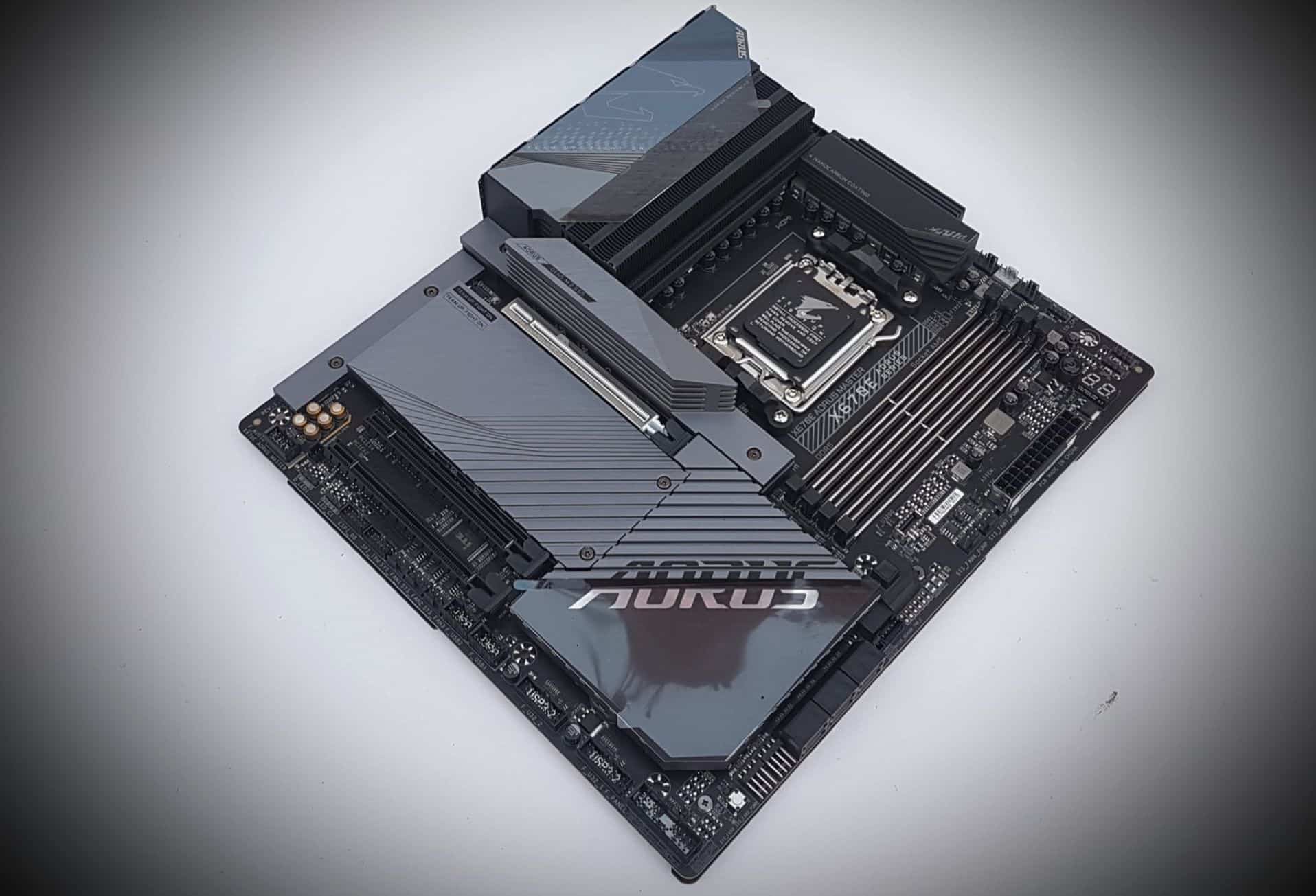
Source: Gigabyte
PCIe Generation 5 (Gen5) started shipping in 2021 on Intel 600-Series platforms with many consumer motherboards utilizing up to 16 Gen5 lanes. With so few Gen5 lanes available, most motherboard makers didn’t dedicate Gen5 connectivity for storage devices. Instead, they opted to prepare for the platforms for next-generation video cards.
PCIe has always been problematic for consumer systems where the buying decision is often based partially on pricing. It’s expensive to make long trace lengths for PCIe and that dollar amount increases with each generation as the technology gets more complicated. Limiting the number of PCIe lanes has been a way to keep costs in check for consumers but there comes a point when the consumer demands more connectivity from the platform.
AMD’s AM5 platform gives you more
AMD’s new AM5 platforms consist of four chipsets – X670E (for Extreme), X670, B650E and B650. We are not going to break down every detail of the chipsets but you can find a comprehensive list of differences in these articles at Anandtech and HWCooling.
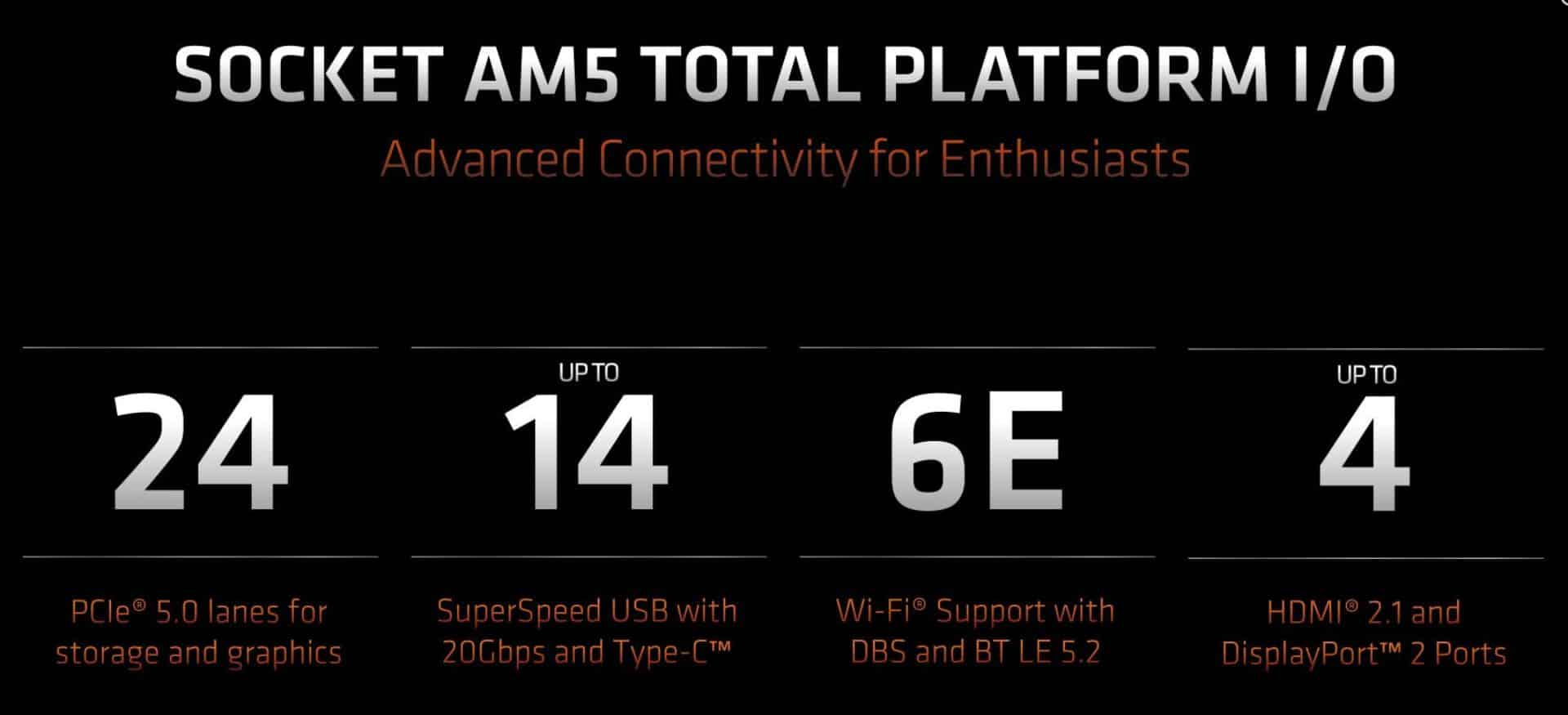
Source: AMD
Although both articles are well worth the read, we are simplifying the data into one talking point. AMD’s AM5 platform increases the number of PCIe lanes from the Ryzen 7000-Series CPUs to 24 (*plus 4 additional lanes to the chipset). This is an increase of four lanes over the previous generation Ryzen and eight more than Intel’s current consumer-focused platforms.
With more direct-to-CPU PCIe lanes available, motherboard designers have increased flexibility in the number of end points or the connection options given to users. The most obvious and by far the most utilized configuration is two full length PCIe x16 slots that split into dual x8 lanes when you populate both, and one or two M.2 slots, all with Gen5 bandwidth.
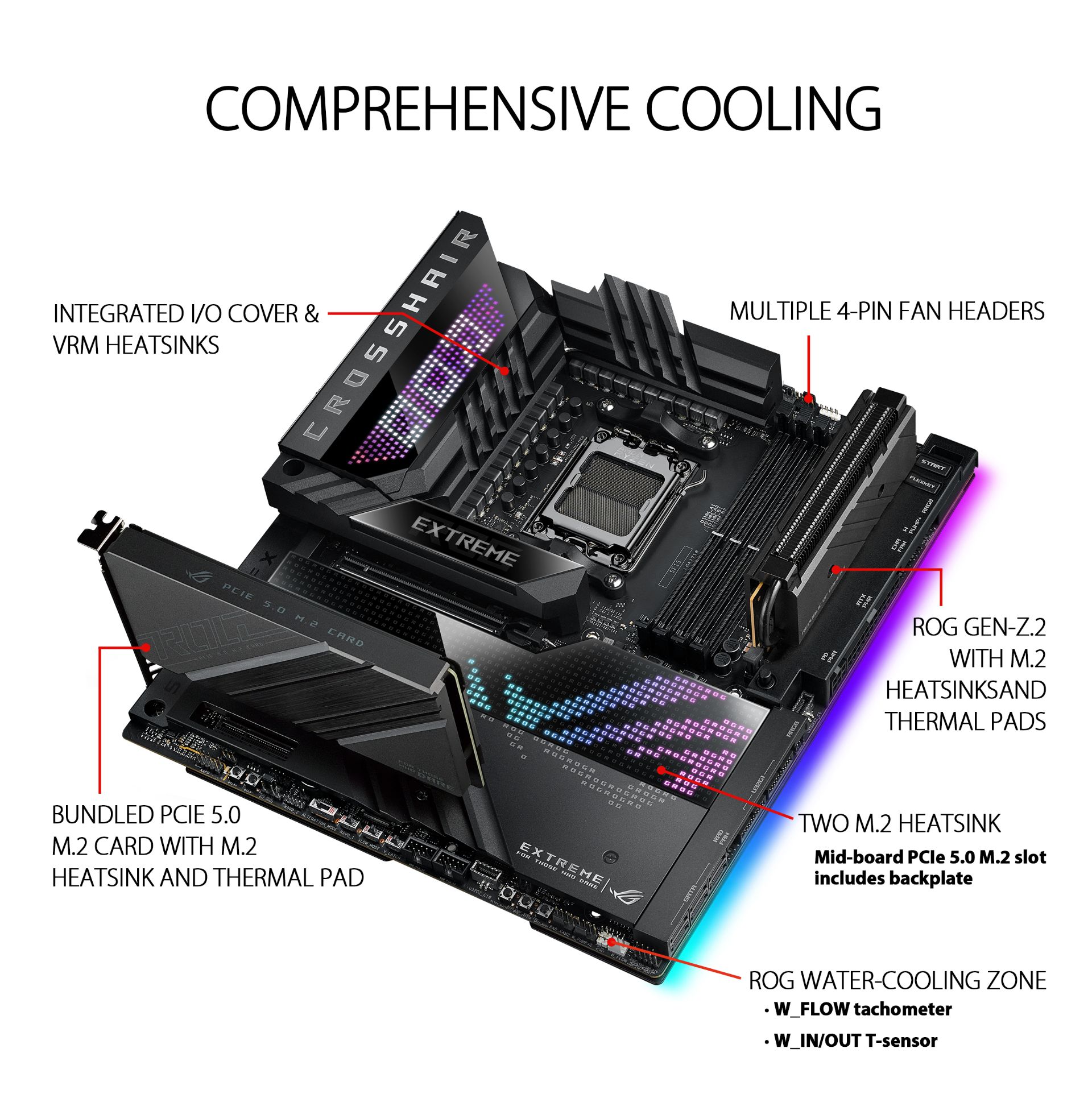
Source: Asus
The first motherboards to hit the market with PCIe Gen3 featured a single M.2 slot and many of the early boards with PCIe Gen4 followed suit with a single M.2 slot. The storage options were very limited. In contrast, the AM5 platform with two slots capable of delivering up to 16 GB/s each is a great accomplishment but it’s just the starting point. This is where the increase in available lanes allows the motherboard companies to get creative. Some of that creativity also comes from a new Phison product called a PCIe Gen5 redriver (PS7101) that allows the PCIe Gen5 trace lengths to extend to the lower portion of the ATX-size motherboard.
The Asus ROG Crosshair X670E Extreme lands on the other end of the spectrum, the extreme side – as the name suggests. With this board, you have the two X16 slots (divided into dual x8 lanes when both are used), two onboard Gen5 M.2 slots. The board also has a DIMM-like add-in card that supports a Gen4 M.2 slot and a Gen5 M.2 slot. Since most of us do not run two video cards, Asus includes an add-in card (for one of the X16 slots) that provides an additional Gen5 M.2 slot with a massive heatsink. If you lost count, that is four Gen5 M.2 endpoints and one Gen4 M.2 for your high-speed SSDs.
Mainstream and entry level: At least 3 M.2 slots
Asus isn’t the only motherboard maker on the extreme end of the spectrum. Gigabyte, Asrock, MSI and others all released premium models for AMD’s AM5 platform. These premium motherboards carry premium features but also come with a premium price, and that isn’t for everyone.
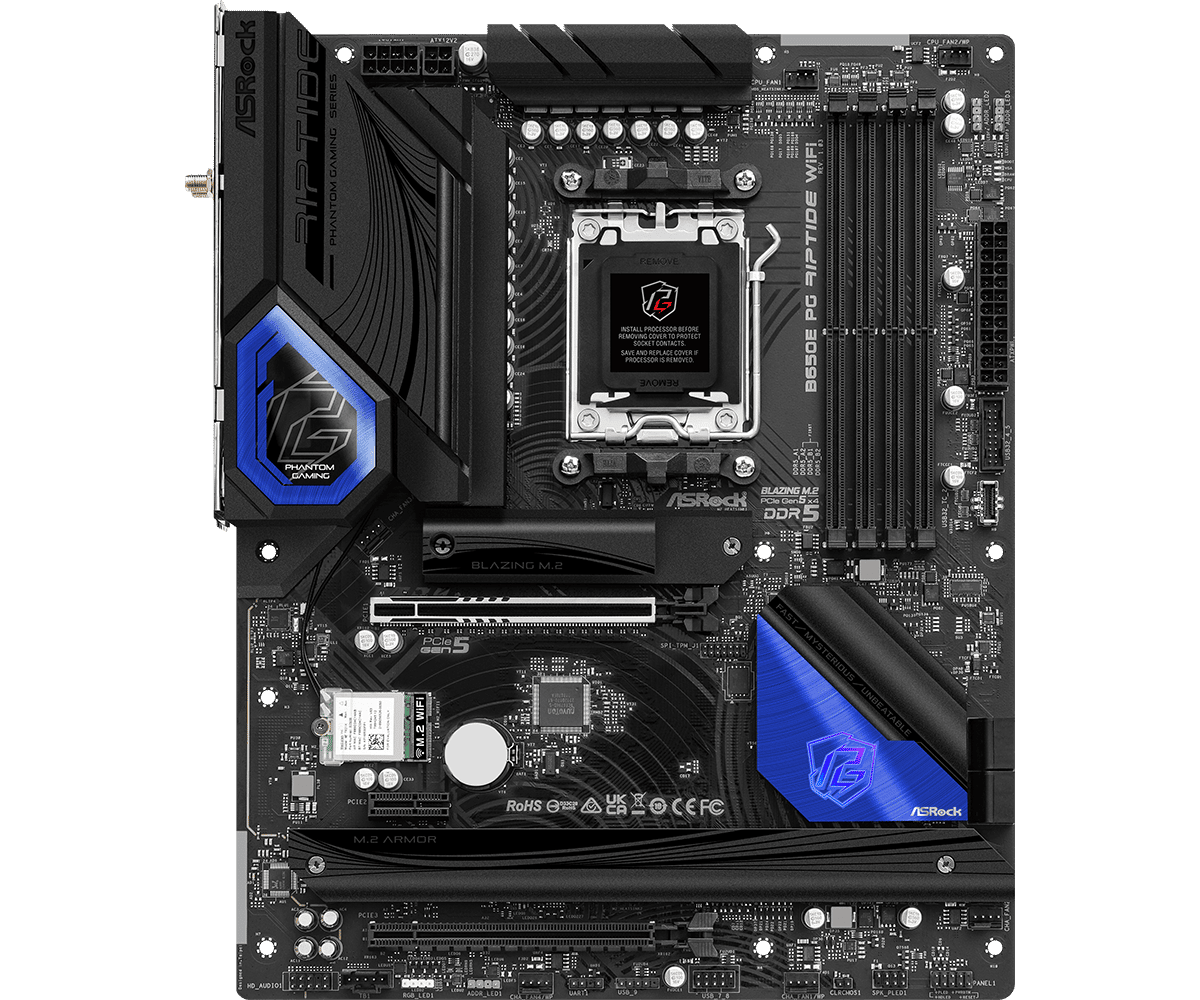
Source: Asrock
The Asrock B650E PG Riptide WiFi is a fairly standard AM5 mainstream motherboard. This board features Gen5, Gen4 and Gen3 x2 M.2 slots. It doesn’t come with a fancy add-in card but you have the ability to purchase one from the aftermarket to add two more Gen5 drives to the second PCIe slot while still utilizing the other x16 PCIe slot for your graphics card. With prices starting at less than $200 for lower tier models, you don’t have to spend a lot to get ready for an all-NVMe storage rig.
DirectStorage and ending thermal throttling
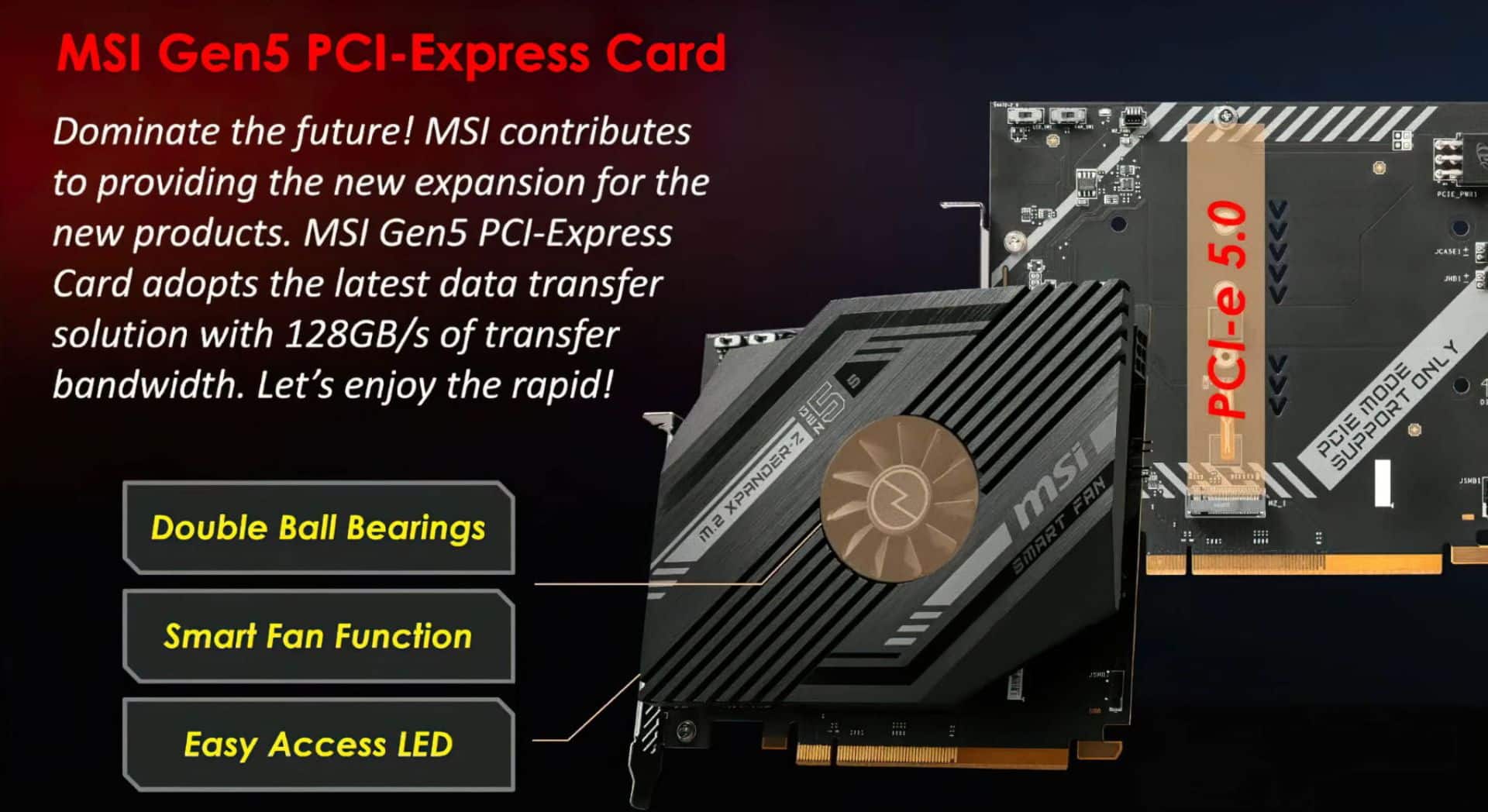
Source: MSI
That leads us to answer the question you just asked yourself. Why do I need a system with more than one NVMe SSD?
There are many reasons to retire your SATA SSDs and replace them with NVMe drives. The first is disk-to-disk file transfers. What good is a blazing fast NVMe drive that is capable of writing data at 10GB/s if the drive sending the data is limited to 500MB/s? The same is true passing data the other direction.
The largest benefit though will come in the middle of October 2022 when the first DirectStorage game comes to market. Scorn is set for release on October 14th and will usher in a new era of gaming where loads times from NVMe storage will take less than two seconds! Scorn is just the first of many games scheduled for release. Eventually, all new games will include this technology that allows NVMe SSDs to deliver data to the GPU as a high queue depth stream, kind of like a massive 16-lane highway that reduces the bottleneck. In that analogy, you can think of SATA SSDs as two-lane city street and hard disk drives like a gravel road in the country.
Moving large amounts of data in a Netflix-like stream at high speeds will generate more workload on the SSD and that will make the drives run warmer than it would with traditional consumer workloads. DirectStorage is a new workload that is much closer to something we’ve previously only seen in workstations and enterprise environments.
To combat the increase in heat, the motherboard manufacturers took a much later interest in solving the thermal throttling problem. Premium motherboards ship with active M.2 cooling but even mainstream boards use large heatsinks that dwarf the heatsinks found on previous generation motherboards.
DirectStorage games will run better on NVMe SSDs and with game sizes surpassing the 100-gigabyte size, you will want more than one NVMe drive in your system for these Triple-A titles. The new AMD AM5 platform, along with the motherboard designers creative engineering make that possible.









